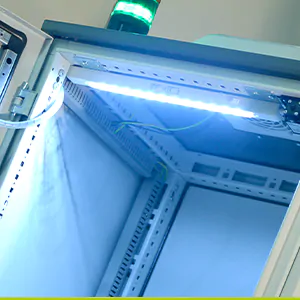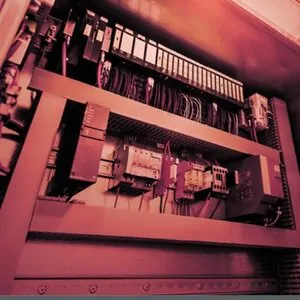Space Saving Roof Exhaust Units
Learn how roof exhaust fans can be an effective cooling solution for cabinets with limited space.
An ever increasing problem with ventilating a control cabinet is having the space to fit a filter fan to the front of a cabinet. The density of equipment fitted often allows little space for the filter fan to fit to the door or have sufficient room within which to effectively cool the equipment. It may also be the case that the sides of the control panel or enclosure are surrounded by other panels, walls, or any other obstacles. The solution is straightforward and involves fitting a roof exhaust unit.
Roof exhaust fans can be an effective alternative to conventional filter fans. A roof unit will take up no internal space and will very effectively dissipate the warm air extracted from the top of the unit. Roof exhaust fans can be an effective alternative to conventional fan filters. In some situations, it is better to extract warm air from the top of an enclosure than via fans mounted inside the door panels.
An important thing to consider when setting up an electrical enclosure is the fan selection. For low pressure, high airflow the most commonly used fan is an axial fan (or compact axial fan). For high pressure, low airflow a centrifugal fan works best. Many users are increasingly opting for a hybrid of the two, especially in the industrial market. The intake is axial while the exhaust is diagonal, resulting in a fan that can be used at higher pressures whilst still delivering high airflow.
The Fandis range of roof units all incorporate centrifugal fans which deliver a high pressure, when coupled with an appropriate inlet filter such as the new FF20U this will also provide a high airflow. This high pressure performance helps overcome the resistance of airflow within a densely configured enclosure.
TP Roof Exhaust Units
The TP range of roof units, developed by Fandis, are constructed using PC/ABS alloy and aluminium and are coloured RAL7035. Should you have another colour in mind then they can be produced dependant on the quantity required. Different IP ratings are available to suit the application, IP24, IP44, IP54 and IP55 and all have UL approval according to UL508 and CSA approval according to CAS/CAN 22.2 No.14.
T Series Roof Exhaust Units
The T Series roof exhaust units have an all metal structure made entirely of epoxy powder painted steel. This particular process makes the paint durable and corrosion resistant. It is also a more environmentally friendly process as it does not require the use of solvents.
The ‘T22’ version in this series is designed for enclosures and electrical cabinets that require a higher performance. It has the same dimensions as the classic version but mounts an external rotor radial fan with a larger rotor circumference, which allows for a greater airflow rate.
All types can be controlled via a thermostat or hygrostat if required, both of which help to serve as an energy saving option as the fan is only operating when actually required.
The Fandis roof units are robustly constructed and easily fitted, they provide the ideal solution for enclosure climate control when space is at a premium and airflow is imperative.
View our full range of roof exhaust units here which are available to buy online and can be provided with an exhaust filter for either convection or forced air cooling in combination with a fan filter unit. We offer two series of units; the ‘T’ series and the ‘TP’ series.


